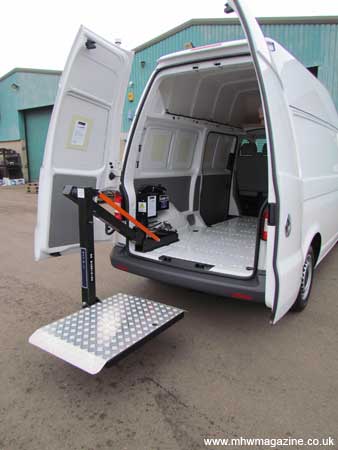
Commercial vehicle operators understand the importance of providing load handling equipment on their vehicles to comply with health and safety legislation and enhance productivity through more effective use of resources. But any equipment, including cranes and loading platforms, installed on the vehicle will contribute to its overall weight. This is most important in the 3.5t and 7.5t categories where operators need to be mindful that there is always limited capacity to carry loads such as tools, equipment, materials and supplies and remain within the designated limits. Minimising the weight of equipment is always preferable.
Load handling equipment manufacturers now offer a wide range of products so that operators can specify products closely aligned to their application requirements. The objective is to provide effective load handling capability while minimising the size and weight of the equipment to leave as much room and carrying capacity as possible on the vehicle. It makes little sense, and can cost more, to specify a crane with 500kg maximum working load (MWL) when the items being handled weigh no more than 200kg. A crane with 250kg MWL will be lighter, more compact and less expensive but is clearly still capable of doing the job.
While right-sizing load handling equipment makes sense, manufacturers have also been redesigning their products to remove unnecessary weight. This has been achieved by re-engineering components to reduce the amount of metal or by replacing materials such as steel with lighter alternatives such as aluminium but without compromising on the performance or structural integrity of products. Penny Hydraulics, for example, has utilised its in-house expertise and advanced computer design and finite element analysis techniques to remodel many of its crane and loading platform products to reduce weight in the past couple of years. This effort has paid dividends across the company's cranes ranging from 100 to 2000kg MWL and allowed it to introduce new loading platform models such as the LoadLift and StepLift with 500kg MWL which weigh little more than comparable earlier designs with 250kg MWL.
Higher capacity products, or those with lower MWL, not only extend the company's range and represent wider choice but also offer new capabilities. With the new LoadLift and StepLift models fleet operators can now specify load handling equipment with 500kg MWL to comply with their own or customers' tender requirements without adding unduly to the overall weight of the vehicle. More generally, by specifying the lightest possible crane or loading platform to meet their needs, operators will also reduce fuel consumption to save running costs and make a contribution to sustainability objectives.